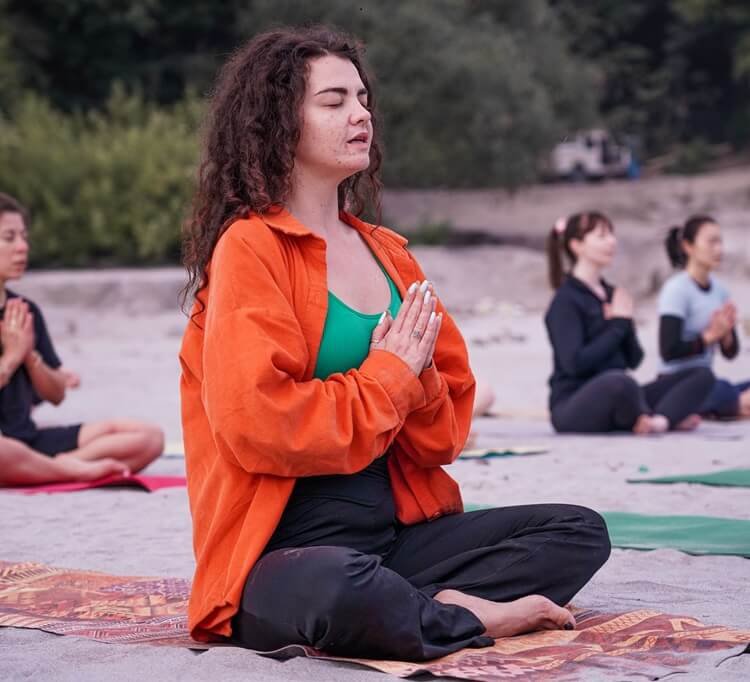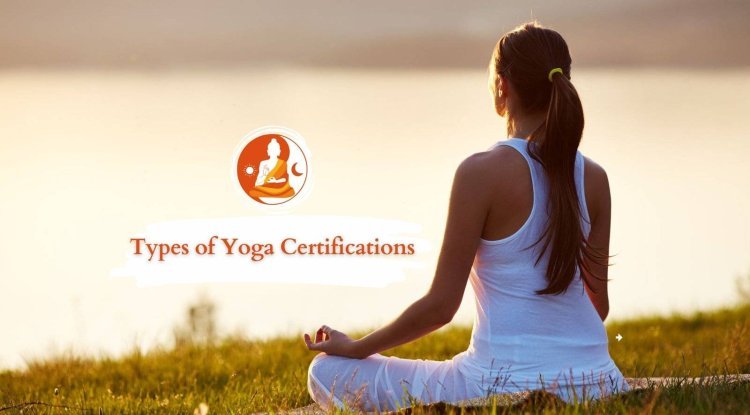Yoga Statistics: How Many People Practice Yoga Worldwide?

In its ancient practice, yoga's origins are based on Indian philosophy. Its popularity has been exponentially growing throughout the years. As more people focus on holistic modes of health and wellness, this will enable research to provide yoga statistics and trends about yoga that will enlighten its social impact. Key statistics discussed in this section will cover participation rates, demographics, and the several benefits of practicing yoga.
Participation Rates Around the World
The Yoga Alliance and Yoga Journal report an estimated 36 million Americans practiced yoga in 2020, increase from 20 million in 2012. The table below shows participation by region:
Region
Estimated Participants
Percentage of Population
North America
36 million
11%
Europe
15 million
5%
Asia
10 million
2%
Australia
3 million
12%
South America
2 million
1%
From the table itself, it already indicates a very high percentage of participation in North America. This already depicts how people have taken on and absorbed the wellness and fitness culture.
Age and Sex Distribution of Yoga Enthusiasts
Yoga attracts a vast mass. Though women form about 72% of the practicing population, men are catching up fast. Over the decades, the number of male participants has increased proving that people have slowly lost their inhibition when the activity is considered a women's game.
Age Distribution of Participants
The age distribution is skewed towards 18-44 years old, making up nearly 60%. Here is the Break Down:
Demographics
18-24 years:
16%
25-34 years:
29%
35-44 years:
15%
45-54 years:
12%
55 years and older:
28%
From these statistics, it may be noted that although yoga is extremely popular amongst young adults, an aging balance will be recorded because older generations are also experiencing its benefits.
Ethnic Diversity
This practice has its background history in Indian culture, although it has diversified its practice recently. It is found through a survey of research that 68% of the yogis practicing are Caucasians and the rest 32% come from diversified ethnic groups like Hispanics, African Americans, and Asian nations. Diversification and Outreach: Recently, the group of yogis consciously made an effort to diversify and reach out to a wide section of society.
Also Read: What to Bring to Yoga Class?
Health Advantages of Yoga
Some of the many health-related physical and mental benefits attributed to yoga make it highly in demand among individuals seeking methods to improve their overall wellness. The most important advantages include the following:
- Flexibility and Muscle Strength: The more frequently one practices, the higher her chances of increasing flexibility and muscle strength, thus reducing the risk of injury.
- Stress: Research shows that an overwhelming percentage of the people practicing yoga reported having lower levels of stress and, thus better emotional well-being.
- Improved Mental health: In addition to the above, it has been generally associated with improved concentration, memory, and cognition.
- Management of Pain: For many chronic pain conditions, yoga has been used for centuries as an adjunct therapy.
Almost 85% of the providers said they felt healthier overall after a year of study, according to an analysis of a National Center for Complementary and Integrative Health survey.
Economic Impact of Yoga
The economic impact is quite significant for the yoga industry. The Yoga market in America stands at about $11 billion in 2020, through yoga classes, clothing, and accessories. Yoga studios, wellness retreats, and training programs have increased employment levels. Such examples include:
- Yoga Studios: More than 25,000 yoga studios operate in the United States.
- Yoga Teacher Training Programs: Over 7,000 registered schools teach yoga worldwide and graduate thousands of new teachers every year.
It puts the economic impact of yoga into perspective as not only a health practice but also an industry in growth.
A table summarizing the economic impact of the yoga industry:
Category
Value
Yoga Market Value (2020)
$11 billion
Number of Yoga Studios
25,000
Number of Registered Yoga Schools
7,000
Employment Impact
Thousands of jobs created
This table provides a clear overview of the significant economic aspects of the yoga industry, highlighting its role as both a health practice and a growing sector.
Yoga and Mental Health
Discussion on wellness has more focused on the aspect of mental health. Scientists have discovered that now, yoga therapy is an emerging treatment for anxiety, depression, and PTSD. A meta-analysis from *Psychological Bulletin* shows that:
- Doctors reported a reduction of 30% in anxiety.
- 45% of participants reported greater improvement and general satisfaction with life.
It, therefore, underscores the importance of yoga as a valuable adjunct to the treatment of mental health conditions and lends strong credence to the disciplines outside of exercise.
Read Also: Yoga Poses to Relieve Gas and Bloating
Further Statistics and Trends
Youth Engagement: 2.6 million children aged 4 to 17 practiced yoga in 2020, and more integration of yoga is being used in schools and youth programs. There is an increased trend in school programs as well as in educational institutions that focus on bringing mindfulness and movement into learning.
Corporate Wellness: About 50% of United States companies include yoga in their wellness programs, designed to help employees use less stress and become more productive at work. This creates a healthier environment for the workplace and reduces healthcare costs for companies.
Retention in the Practice: A survey shows that 75% continue practicing for more than three years, which signifies a strong commitment to the practice. This retention manifests that yoga is not only welcoming new people but retains them, too.
Online Community Growth: The online communities and social media groups for yoga have increased significantly in recent times, where millions of followers post and share their thoughts, tips, and live virtual classes. Thus, an online network promotes feelings of being part of a community.
Mindfulness and Mental Health: Approximately 62% of yoga practitioners report using it in order to improve mindfulness, which has been associated with decreases in stress, anxiety, and depression. This percentage is representative of the expected mental health benefits that practitioners attribute to the use of yoga.
International Trends of Participation: One survey from the recent past revealed that 40 percent of the world yoga practitioners practiced for mental health reasons, thus further supporting the fact that the technique is widely used globally to alleviate pressure.
Effects on Athletic Performance: Athletes are increasingly adopting yoga in their training programs for increased flexibility, balance, and mental concentration. More than 30% of professional athletes are increasing their use of yoga in these areas, especially in football, basketball, and tennis. The changing popularity of styles, with Vinyasa and Hatha, are the most practiced yoga forms. Simultaneously, other styles such as Restorative and Yin Yoga, which people want for gentler purposes for relaxation and recovery, are showing major growth.
Yoga for Seniors: In this recent era, more programs have been initiated specifically for the promotion of yoga tailored to the elderly. According to data from the U.S. Department of Health and Human Services, approximately 19 percent of the American public practicing yoga are seniors 65 and older, which suggests that yoga particularly helps older adults in mobilization, balance, and overall health.
International Yoga Day: This activity was marked on the day June 21st, and on this date, it contributed to aggravating the participation global issue when millions and millions join yoga events around the globe every year. International Yoga Day builds awareness about yoga promotion and encourages people to practice it.
Yoga Retreats and Workshops: The growing demand for yoga retreats and workshops catering to specific needs has increased audience participation, likely by 45% in the last five years. Weekend retreats and immersion courses enable practitioners to spend more time on practice and connect with like-minded individuals.
Healthcare Integration: Now, nearly a quarter of all healthcare professionals prescribe yoga as part of the treatment cycle for patients who suffer from stress, anxiety, and chronic pain. This trend is a milestone in seeing how yoga is becoming increasingly legitimate as an intervention tool. All these statistics and trends only reinforce that yoga's impact is spreading into the mainstream through different demographics and sectors to reflect its hard-won success in making it applicable and relevant in the health and wellness landscape today.
Winding Up!
If yoga statistics on participation, demographics, and benefits do tell a story, it is that of a practice unconfined by cultural boundaries and stretching out to appeal to the broadest audience. As society continues to become more reliant on yoga as a method for health benefits in body and mind, it will likely continue its upward trend of popularity. There are other factors besides the economic effect that place digits in an important part of modern wellness culture through the evolution of the data.
As the world continues to tune itself more and more to a vision of wholesome health, yoga is undoubtedly slated to play a prime role in keeping a grasp on health for one and all in perpetuity. Understanding such trends helps us appreciate yoga's rich history and underlines its current relevance for us.
What's Your Reaction?
























